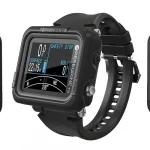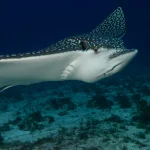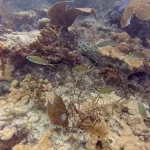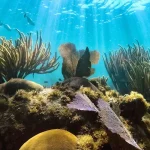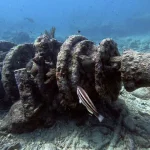Table of Contents
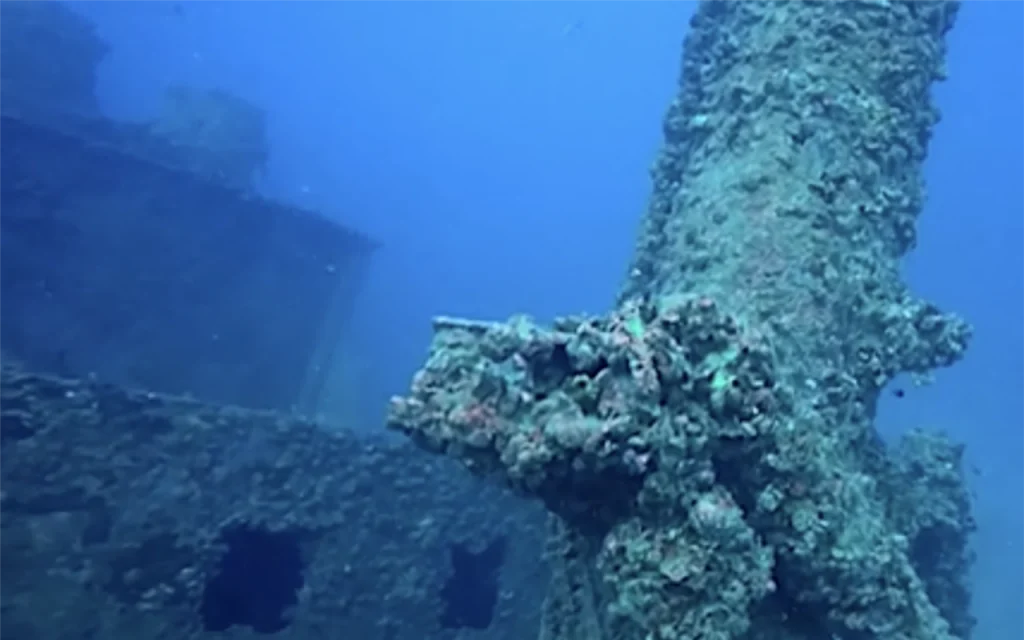
The Jim Atria wreck is a popular dive site, known for its structural integrity and the diverse marine life it supports, including corals, sea fans, barracudas, and Goliath groupers.
Article at a Glance
- Location and Depth: The Jim Atria wreck is located off the coast of Fort Lauderdale, Florida, at approximately 26° 09.870′ N latitude and 80° 04.225′ W longitude, resting at a depth of around 40 meters (135 feet).
- Historical Background: Originally built as the Dutch freighter Poinciana in 1961, the ship sank in the Miami River in 1977 and was later transformed into an artificial reef when it was sunk in 1987.
- Unique Features: The wreck is mostly intact, featuring two standing masts and open cargo holds, making it an exciting site for penetration diving and exploration.
- Marine Life: The Jim Atria is home to a diverse array of marine species, including Goliath groupers, barracudas, and various coral formations, creating a vibrant underwater ecosystem.
- Diving Conditions: The site is best suited for advanced divers due to its depth and potential for strong currents, with visibility typically ranging from 10 to 30 meters.
- Safety Measures: Divers are advised to have advanced open water certification, proper navigation skills, and to dive with experienced operators familiar with the site.
- Dive Shops: Local dive shops such as Aqualife Divers and Scuba Dive It offer organized trips to the Jim Atria wreck, ensuring a safe and enjoyable diving experience.
Shipwreck Location Coordinates and Depth
Depth
The wreck rests at a depth of about 40 meters (135 feet).
Location Coordinates
The coordinates for the wreck are approximately 26° 09.870′ N latitude and 80° 04.225′ W longitude.
What Do Scuba Divers Say About This Ship
- Dive Level and Conditions: The Jim Atria is considered an advanced dive site, suitable for advanced open water divers or those under the supervision of an instructor. The dive involves depths ranging from 75 feet to the top of the mast, around 95 feet to the superstructure, and a maximum depth of 133 feet to the sand.
- Dive Experience: The wreck is described as a good dive site with typically good visibility ranging from 10 to 30 meters. It is accessible by boat and is best suited for divers with CMAS ** or Advanced Open Water (AOW) certification.
- Marine Life: The wreck is covered with corals, sea fans, and oysters, and serves as a habitat for various marine species, including barracudas and Goliath groupers. Divers may also encounter whale sharks, dolphins, and sea turtles if they are lucky.
- Wreck Features: The Jim Atria is a Dutch freighter that is 227 feet long and 34 feet wide. It sits upright with its two masts intact, allowing for penetration diving through several openings. The ship is mostly intact and covered in soft coral, making it an interesting site for exploration.
What Kind of Marine Life Can Be Found on The Ship
The Jim Atria wreck is home to a diverse array of marine life. Divers can encounter large species such as Goliath groupers and barracudas, which are commonly seen around the wreck.
The structure is also covered in marine growth, including corals, sea fans, and oysters, creating a vibrant habitat for various fish species. Additionally, divers might spot other marine creatures such as whale sharks, dolphins, and sea turtles if they are fortunate.
The wreck is also frequented by species like sweeper fish, lionfish, spider crabs, and squirrelfish.
This variety of marine life makes the Jim Atria a popular site for underwater photography and exploration.
Key Information
| Key Information | Details |
|---|---|
| Location | Off the coast of Fort Lauderdale, Florida |
| Coordinates | Approximately 26° 09.870′ N latitude, 80° 04.225′ W longitude |
| Depth | Ranges from 75 feet (23 meters) to 110 feet (34 meters) |
| Original Name | Poinciana |
| Year Built | 1961 |
| Sinking Year | 1987 (intentionally sunk to create an artificial reef) |
| Length | 227 feet (69 meters) |
| Beam | 34 feet (10.4 meters) |
| Marine Life | Home to Goliath groupers, barracudas, and various coral formations |
| Visibility | Typically ranges from 10 to 30 meters |
| Diving Certification Required | Advanced Open Water or under instructor supervision |
| Access | Accessible by boat |
| Notable Features | Intact structure with two masts, open cargo holds, and thriving marine ecosystem |
What Makes The Jim Atria a Unique Diving Experience
- Artificial Reef Creation: The Jim Atria was intentionally sunk in 1987 to create an artificial reef, transforming a former Dutch freighter into a thriving marine habitat. This has attracted a diverse array of marine life, making it a vibrant dive site.
- Structural Features: The wreck sits upright with its two masts intact, allowing for penetration diving through several openings. This intact structure provides an exciting opportunity for divers to explore the expansive ship and its features.
- Marine Life: The wreck is covered with corals, sea fans, and oysters, and is home to species such as barracudas, Goliath groupers, and various tropical fish. Divers may also encounter larger marine animals like whale sharks, dolphins, and sea turtles, adding to the allure of the dive.
- Diving Conditions: Located off the coast of Fort Lauderdale, Florida, the Jim Atria is accessible by boat and offers good visibility, typically ranging from 10 to 30 meters. The site is best suited for advanced open water divers due to its depth and potential for strong currents.
How Does The Jim Atria Compare to Other Shipwrecks in Florida
- Artificial Reef: The Jim Atria was intentionally sunk in 1987 to create an artificial reef, which has since developed into a thriving marine ecosystem. This aspect is shared with many Florida wrecks, but the Jim Atria’s transformation into a vibrant habitat is particularly notable.
- Structural Integrity: The wreck is mostly intact, with its two masts standing upright, allowing for penetration diving through several openings. This makes it an exciting site for divers interested in exploring the internal structure of a shipwreck.
- Marine Life: The wreck is covered with corals, sea fans, and oysters, and is home to large marine species such as Goliath groupers and barracudas. The presence of such diverse marine life enhances the diving experience, offering opportunities for underwater photography and wildlife observation.
- Depth and Conditions: The Jim Atria lies at a depth of around 110 feet, making it suitable for advanced divers. The potential for strong currents adds an element of challenge, which can be appealing to experienced divers seeking a more demanding dive.
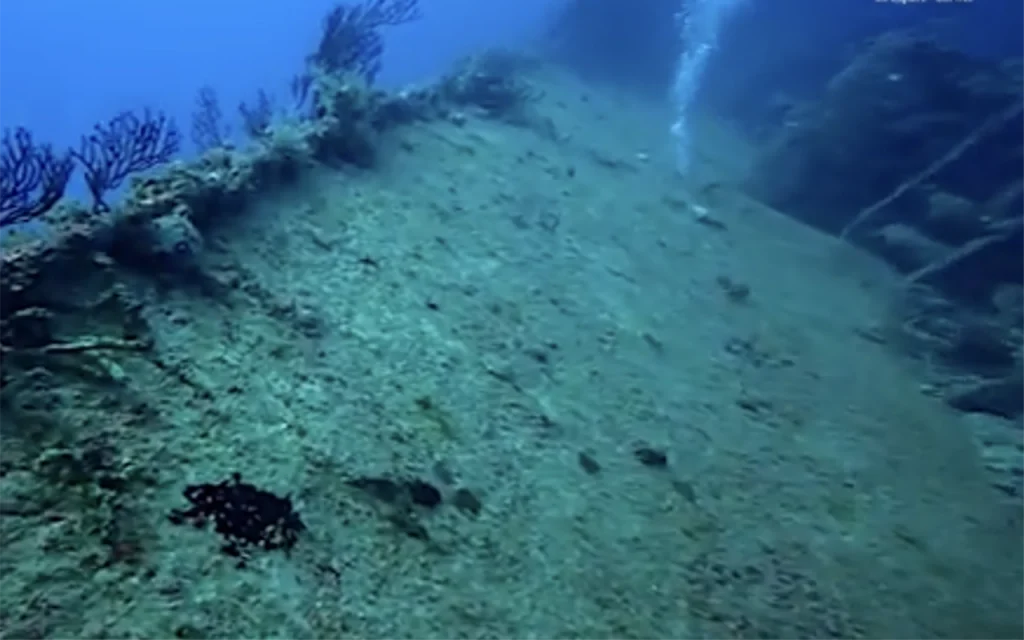
What is The Full History of This Ship
- Construction and Early Years: The ship was originally built in 1961 in Holland as a Dutch freighter. It was initially named the Poinciana.
- Sinking and Refloating: The ship sank in the Miami River in 1977. It was later refloated with the intention of turning it into an artificial reef off the coast of Fort Lauderdale, Florida.
- Transformation into an Artificial Reef: In 1987, the vessel was purchased by a local land developer who aimed to create an artificial reef. The ship was sunk on September 23, 1987, to serve this purpose. It was renamed in honor of Jim Atria, a well-known diver and fisherman who played a role in transforming the ship into a diving wreck.
- Impact of Hurricane Andrew: Initially, the ship lay on its port side after being sunk. However, in 1996, Hurricane Andrew straightened the wreck, and it now sits upright with its two masts intact.
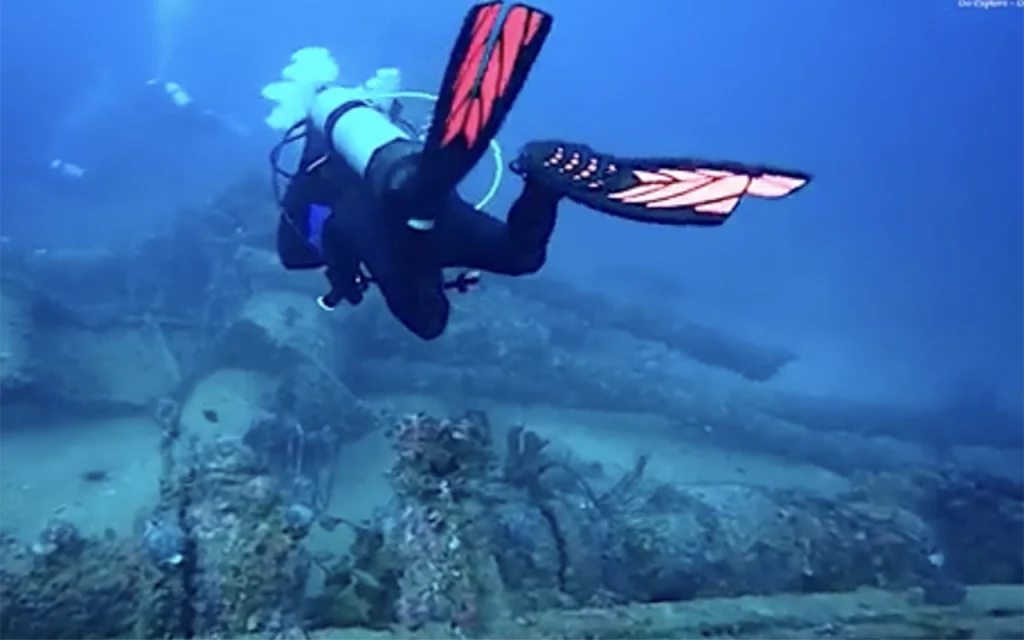
What Historical Features Can Still Be Identified on The Jim Atria Wreck
- Structural Integrity: The wreck is mostly intact, sitting upright with its two masts still standing. This allows for penetration diving through its several openings, providing divers with the opportunity to explore the ship’s internal structure4.
- Original Name and History: Originally named the Poinciana, the ship was a Dutch freighter built in 1961. It was later renamed Jim Atria after being sunk as an artificial reef in 1987. The ship’s history as a merchant marine vessel and its transformation into a reef are significant aspects of its past4.
- Physical Features: The ship spans 227 feet in length with a beam of 34 feet. Divers can observe the open cargo holds and swim-throughs, which are notable features of the wreck. The large masts, rising up to almost 75 feet, are also prominent and add to the dive experience4.
- Hurricane Impact: The wreck initially lay on its port side but was straightened by Hurricane Andrew in 1996. This historical event has left the ship in its current upright position, making it accessible for exploration4.
What Safety Measures Are in Place for Divers Visiting The Jim Atria
- Skill Level Requirement: The Jim Atria is considered an advanced dive site. It is recommended for advanced open water divers or open water divers who are under the direct supervision of an instructor.
- Depth Considerations: The wreck lies at a depth of approximately 40 meters (135 feet), with the main deck at about 110 feet. Divers should be experienced in deep diving and comfortable with the potential for strong currents at these depths.
- Visibility and Conditions: Visibility at the site is typically good, ranging from 10 to 30 meters. However, divers should be prepared for varying conditions and ensure they have the appropriate training and equipment for the dive.
- Access and Navigation: The wreck is accessible by boat, and divers should ensure they have a reliable dive operator familiar with the site. Proper navigation skills are essential, especially if planning penetration dives through the wreck’s openings.
Dive Shops That Prove Diving Trips to This Shipwreck
- Aqualife Divers: Located in Pompano Beach, Florida, Aqualife Divers offers diving trips to the Jim Atria wreck. They cater to advanced open water divers and provide various dive packages.
- Scuba Dive It: This dive shop provides trips to the Jim Atria wreck, emphasizing that it is suitable for advanced open water divers or those under the supervision of an instructor.

